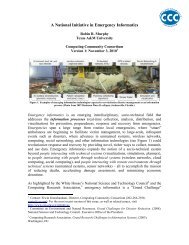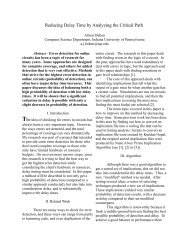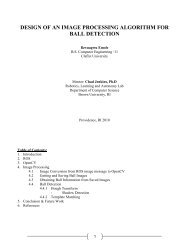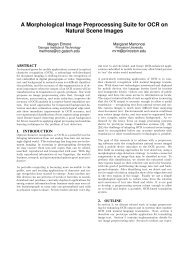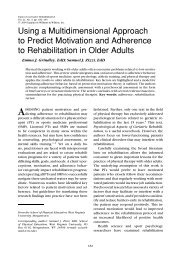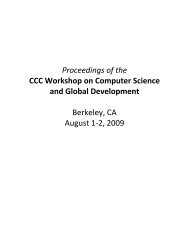High Performance Microchip Supply - Under Secretary of Defense ...
High Performance Microchip Supply - Under Secretary of Defense ...
High Performance Microchip Supply - Under Secretary of Defense ...
Create successful ePaper yourself
Turn your PDF publications into a flip-book with our unique Google optimized e-Paper software.
FINDINGS ___________________________________________________________________<br />
stockpile stewardship, engineering, and process development<br />
requirements. These facilities historically provided classified or<br />
highly sensitive products, but did not address the need for “trusted”<br />
supplies for a larger set <strong>of</strong> DOD weapon system devices; there were<br />
sufficient U.S. firms willing and able to satisfy the then–state-<strong>of</strong>-theart<br />
needs.<br />
There is no longer a diverse base <strong>of</strong> U.S. IC fabricators capable <strong>of</strong><br />
meeting trusted and classified chip needs.<br />
DOD has initiated a trusted foundry program to provide, in the<br />
interim, a source <strong>of</strong> high-performance ICs in accordance with the<br />
overall defense trusted integrated circuit supply (DTICS) mandate.<br />
DOD has contracted for these services on a “take-or-pay” basis. 25<br />
More information on the trusted foundry program can be found in<br />
appendix F.<br />
At this time, a single foundry contract has been let for leadingedge<br />
fabrication (tier 1) 26 services with IBM. No foundry contracts<br />
have been negotiated with tier 2 and 3 fabricators; however, the<br />
larger number <strong>of</strong> fabricators available to produce ICs with processes<br />
one or more generations behind the leading edge has resulted in<br />
supplier competition to participate in the program. Sources <strong>of</strong> the<br />
older tier 2 and tier 3 technologies are much more available; however,<br />
a longer-term concern remains when the current tier 1 technology<br />
becomes tier 2 and there are few U.S. facilities capable <strong>of</strong> practicing it.<br />
The specific qualifications required <strong>of</strong> a foundry to be designated<br />
“trusted” are the province <strong>of</strong> the trusted foundry program and<br />
DTICS.<br />
25. Presentation to the <strong>Defense</strong> Science Board Task Force on <strong>High</strong>-performance<br />
Microelectronics by Chuck Varney, Chief, Trusted Access Program Office May 20, 2004.<br />
26. For purposes <strong>of</strong> the Trusted Foundry Program, the term “Tier 1" refers to a foundry<br />
having the state-<strong>of</strong>-the-art (leading edge) <strong>of</strong> commercial wafer fabrication technology.<br />
At this time, the leading edge is a CMOS process with 90 nm minimum critical<br />
dimensions. “Tier 2" is taken to refer to a foundry capable <strong>of</strong> processing wafer 2 to 4<br />
generations behind the leading edge (now CMOS with 130, 180 or 250 nm critical<br />
dimensions), “Tier 3" refers to foundries with wafer processing capabilities even further<br />
behind.<br />
36 _________________________________________________________ DSB TASK FORCE ON





